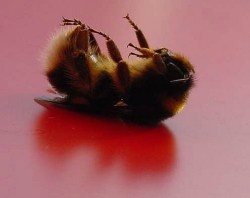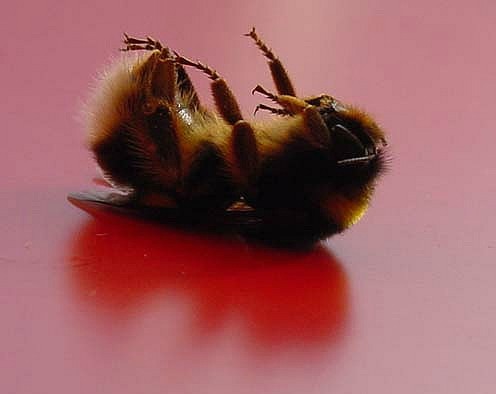
Photo by Javier Martinez Solera.
Beekeepers in the U.S., looking for a way to stop or slow the die-offs devastating their industry, are watching their options dwindle along with the bees. Last week, the Environmental Protection Agency (EPA) rejected a petition [PDF] that beekeepers and environmental groups filed back in March asking EPA to stop sales of clothianidin, a pesticide believed to be harmful to bees. EPA said use of the chemical does not present an “imminent hazard” — the requirement to suspend registration of a pesticide.
EPA defines an imminent hazard as harm that will occur “within the one to two years necessary to complete cancellation proceedings” and said it didn’t think that was likely with clothianidin.
And the agency is right. As scary as the bee losses are (beekeepers have seen an average 30 percent population decline every year since 2006, and 70 percent of our flowering plants need pollinators to reproduce, so … you do the math), we probably aren’t going to see a full-scale collapse of our food system within the next two years solely as a result of poisoned bees. We probably aren’t going to see a full-scale collapse of our energy system within the next two years, either — but is that as far out as we’re planning these days?
Neonicotinoids (neonics), the class of pesticides to which clothianidin belongs, are by no means the definitive culprit when it comes to bee deaths. Mites, viruses, pathogens, and habitat loss are all suspects in the case of Colony Collapse Disorder (CCD) and the general poor health now plaguing pollinators. While we still don’t know what exactly triggers CCD, a growing body of scientific evidence highlights neonics’ sublethal effects on bees: Exposure to the chemicals impairs bees’ scavenging and navigation abilities and weakens their immune systems. Even these subtle effects can prove destructive, as The Economist explains:
… neonicotinoids have the explanatory virtue of being a fairly recent development and also one which, as [two studies released in March] suggest, could be a common factor in weakening a colony without actually pushing it over the edge. The killer blow would then be administered by something else: a mite infestation, perhaps, or a fungal infection, or whatever else happened to turn up that a healthy hive would have shrugged off. A paper published earlier this year in Naturwissenschaften, for example, showed that even small doses of neonicotinoids weakened bees’ resistance to Nosema, a common fungal parasite.
EPA technically rejected the petition because it failed to make a case for imminent harm. But the agency also shot down the science linking clothianidin to bee decline, acknowledging that the chemical has “acute effects” on bees, but citing the low number of reported “incidents” related to clothianidin use as evidence that it doesn’t cause widespread problems. Of course, because of the many factors probably taking their tolls on bees, I’d imagine it would be hard to report an incident as being clearly caused by clothianidin.
The frustrating part about all of this is that if EPA had followed its own protocol, we might not be in this situation today. Clothianidin went on the market in 2003 under “conditional registration,” with concerned EPA scientists pushing for a close study of its effects on pollinators. Bayer — the manufacturer of the pesticide — didn’t complete such a study until 2007 (two years after EPA’s deadline). Then, in 2010, the pesticide went on the market under full registration. Later that year, a leaked memo revealed EPA scientists essentially found the Bayer study inadequate (and independent scientists agree), but clothianidin has remained on the market ever since. Tom Philpott called the whole mess “a tale of a key public watchdog instead heeling to the industry it’s supposed to regulate.”
And it looks like the saga is continuing in much the same way. A press release from the petitioners puts it like this:
“EPA has failed in its statutory responsibility to protect beekeeper livelihoods and the environment from an ‘imminent hazard,’” said Peter Jenkins, attorney at Center for Food Safety and author of the legal petition filed in late March. “The agency explicitly refused to consider the massive amount of supplemental information we submitted that came to light after we filed the petition, as bees started dying in large numbers this Spring during the April and May corn planting season.”
EPA will open a 60-day public comment period to review supplemental information. The agency plans to complete its evaluation of neonicotinoid safety in 2018.


